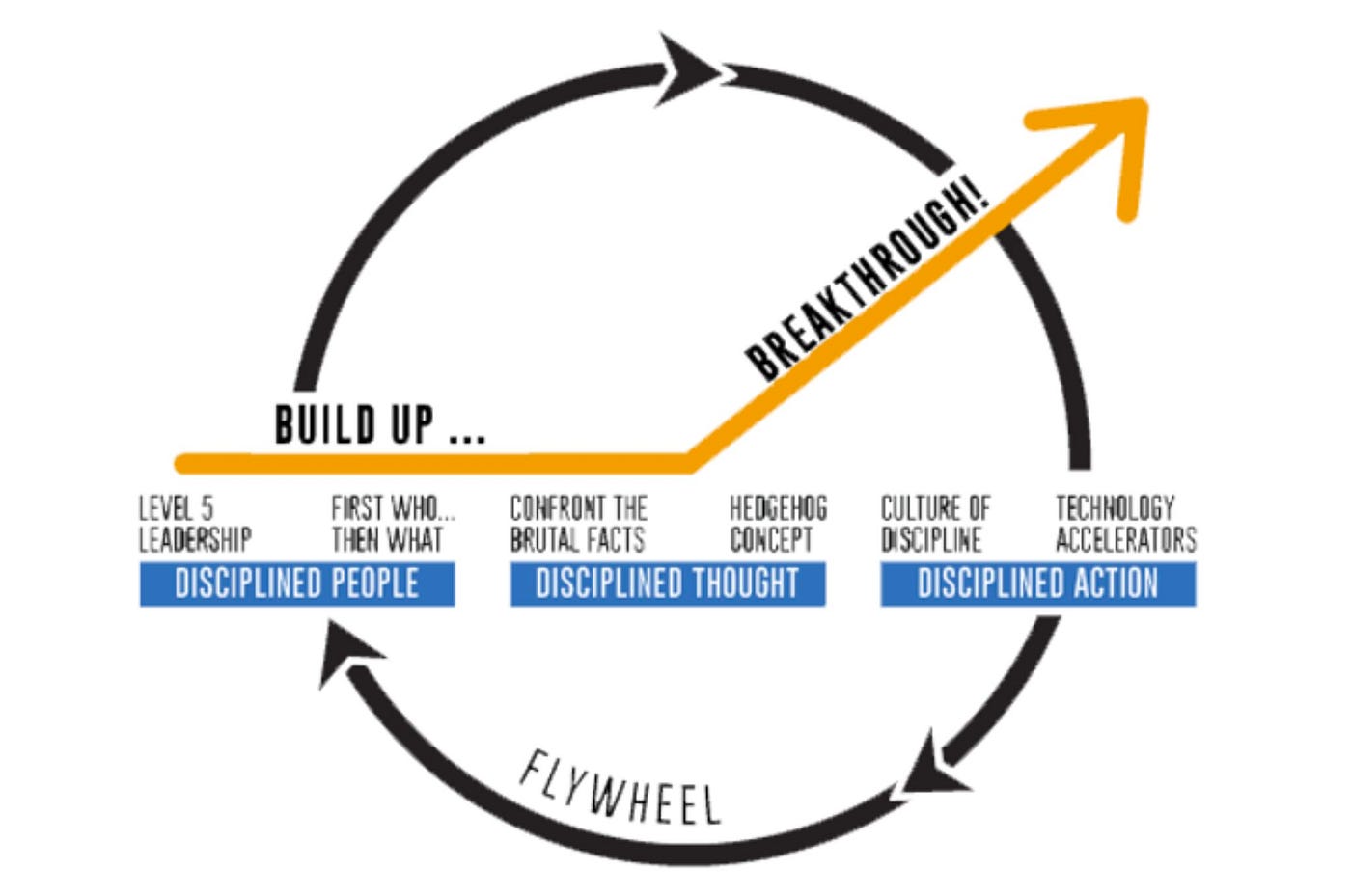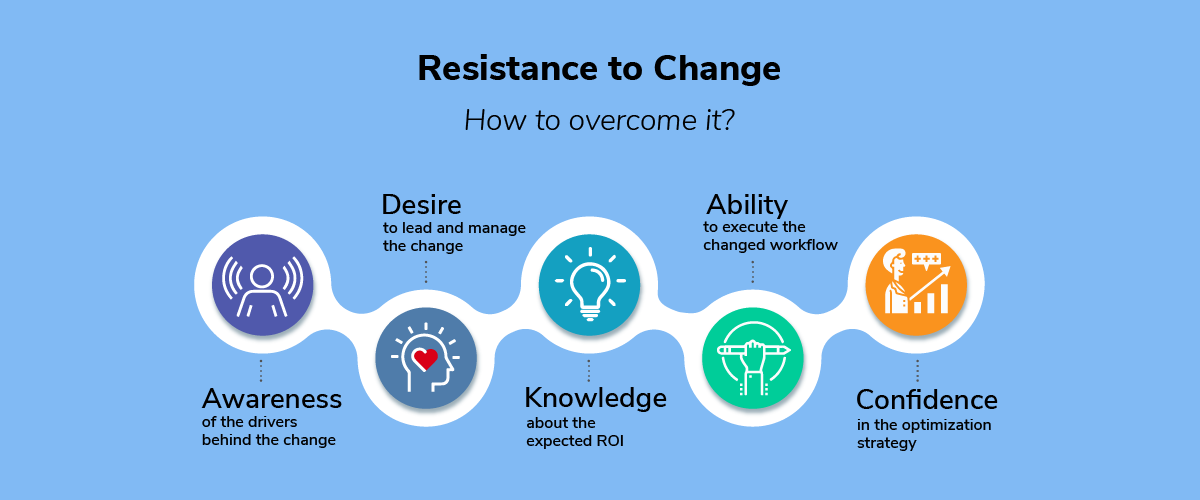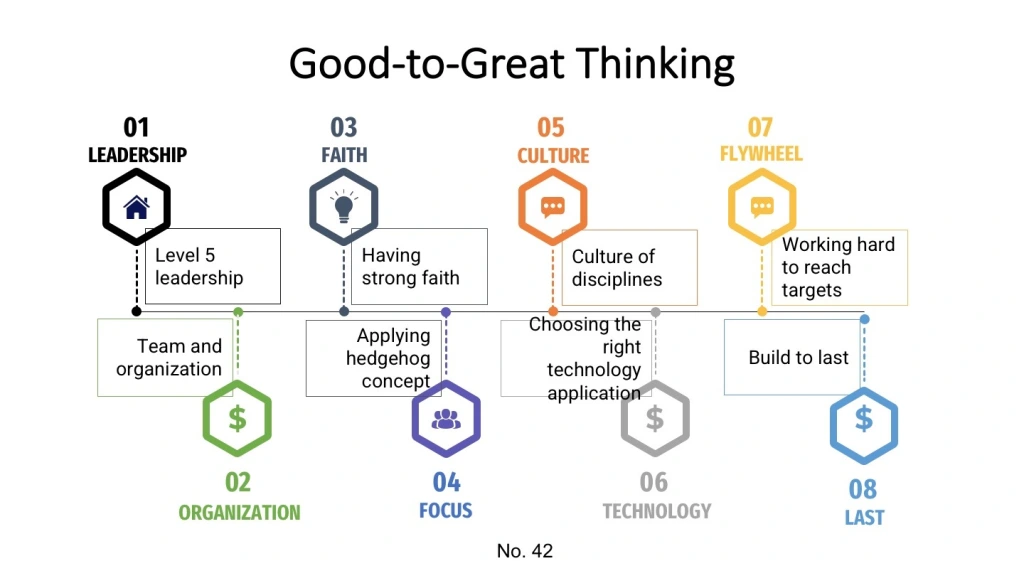How Franchises Can Achieve Greatness with Insights from “Good to Great” by Jim Collins
the economy and the world of franchising are always changing, the pursuit of greatness is not just an aspiration; it’s a strategic imperative. Jim Collins’ transformative book, “Good to Great,” offers profound insights into the journey from being merely good to achieving sustained greatness.
In this blog, we’ll delve into the key concepts from “Good to Great” and explore how franchise leaders can apply these principles to elevate their businesses to the next level of success.
Understanding the Core Concepts of “Good to Great”:
1. Level 5 Leadership:
At the heart of “Good to Great” is the concept of Level 5 Leadership – a leadership style characterized by personal humility and professional will. Collins emphasizes that great leaders are driven by personal success and commitment to the organisation’s success. In the context of franchising, this involves cultivating leaders who prioritize the franchise’s long-term success over personal accolades.
2. The Hedgehog Concept:
The Hedgehog Concept is a powerful metaphor in “Good to Great,” derived from the idea that a hedgehog does one thing exceptionally well – it rolls into a spiky ball for self-defence. Franchise leaders can apply this concept by identifying the intersection of three crucial circles: what the franchise is passionate about, what it can be the best in the world, and what drives its economic engine. Finding this sweet spot defines the franchise’s strategic focus.


3. The Flywheel Effect:
Jim Collins introduces the Flywheel Effect as a representation of sustained effort and focus leading to significant momentum. In franchising, this principle underscores the importance of consistent and persistent actions that, over time, build momentum for the franchise. Franchise leaders must identify and consistently push on the key drivers that will ultimately lead to breakthrough success.
4. First Who, Then What:
Collins mentioned that great organizations prioritize “who” before “what” – getting the right people on the bus and in the right seats before deciding where to drive. For franchises, this means placing a premium on selecting and developing the right franchisees and team members who align with the franchise’s core values and contribute to a culture of excellence.
5. Confront the Brutal Facts (Yet Never Lose Faith):
The principle of confronting the brutal facts involves acknowledging the challenges and realities the franchise faces. At the same time, it emphasizes maintaining unwavering faith in the organisation’s ultimate success. Franchise leaders must foster a culture of transparency, where issues are addressed head-on and solutions are sought collaboratively.
Applying “Good to Great” Principles to Franchise Operations:
1. Level 5 Leadership in Franchising:
To apply Level 5 Leadership in franchising, leaders must prioritize humility, discipline, and resilience. Creating a culture of servant leadership, where franchise leaders serve the greater good of the franchise, sets the stage for enduring success. This leadership style tricks down to franchisees, fostering a sense of shared purpose.
2. Hedgehog Concept in Strategic Planning:
Franchise leaders should apply the Hedgehog Concept by defining and relentlessly pursuing the franchise’s core strengths. This involves regular reassessment of the franchise’s passion, unique capabilities, and economic engine to ensure strategic decisions align with the core principles that drive greatness.


3. Flywheel Effect in Franchise Growth:
Consistency is the key to unlocking the Flywheel Effect in franchising. Franchise leaders should identify the critical actions that contribute to growth and focus on consistently executing these strategies. Whether it’s marketing, customer service, or operational excellence, the cumulative effect of sustained efforts propels the franchise to new heights.
4. First Who, Then What in Building Franchise Teams:
Building high-performing franchise teams begins with recruiting and developing the right individuals. Franchise leaders should prioritize the selection of franchisees and staff who align with the franchise’s core values and demonstrate a commitment to achieving greatness. This principle ensures that everyone on the team drives toward a shared vision.
5. Confront the Brutal Facts in Problem-Solving:
Franchise leaders must foster a culture where challenges are addressed openly and collaboratively. Creating a safe space for honest dialogue allows the franchise to confront the brutal facts, leading to innovative problem-solving and continuous improvement. This transparency ensures that issues are resolved promptly, preventing long-term setbacks.
Overcoming Challenges in the Journey to Greatness:
1. Resistance to Change:
Achieving greatness often requires transformative change, which can be met with resistance. Franchise leaders should communicate the rationale behind changes, involve franchisees in decision-making, and highlight the positive impact on the overall franchise vision.
2. Maintaining Consistency Across Locations:
Consistency is paramount in the pursuit of greatness. Franchise leaders should implement standardized processes, provide ongoing training, and use technology to ensure that the principles and strategies driving greatness are consistently applied across all franchise locations.
3. Balancing Short-Term Results with Long-Term Vision:
The tension between short-term results and long-term vision is a common challenge. Franchise leaders should strike a balance by aligning short-term goals with the overarching vision for greatness. This involves setting milestones that contribute to the long-term success of the franchise.


Conclusion:
“Transcending Good: How Franchises Can Achieve Greatness” is not just a lofty ideal; it’s a strategic roadmap inspired by the profound insights of “Good to Great.” By applying Level 5 Leadership, embracing the Hedgehog Concept, harnessing the Flywheel Effect, prioritizing the right people, and confronting the brutal facts, franchise leaders can propel their organizations from good to great.
In the competitive landscape of franchising, where excellence is the standard, these principles guide franchises toward enduring success and a legacy of greatness.
